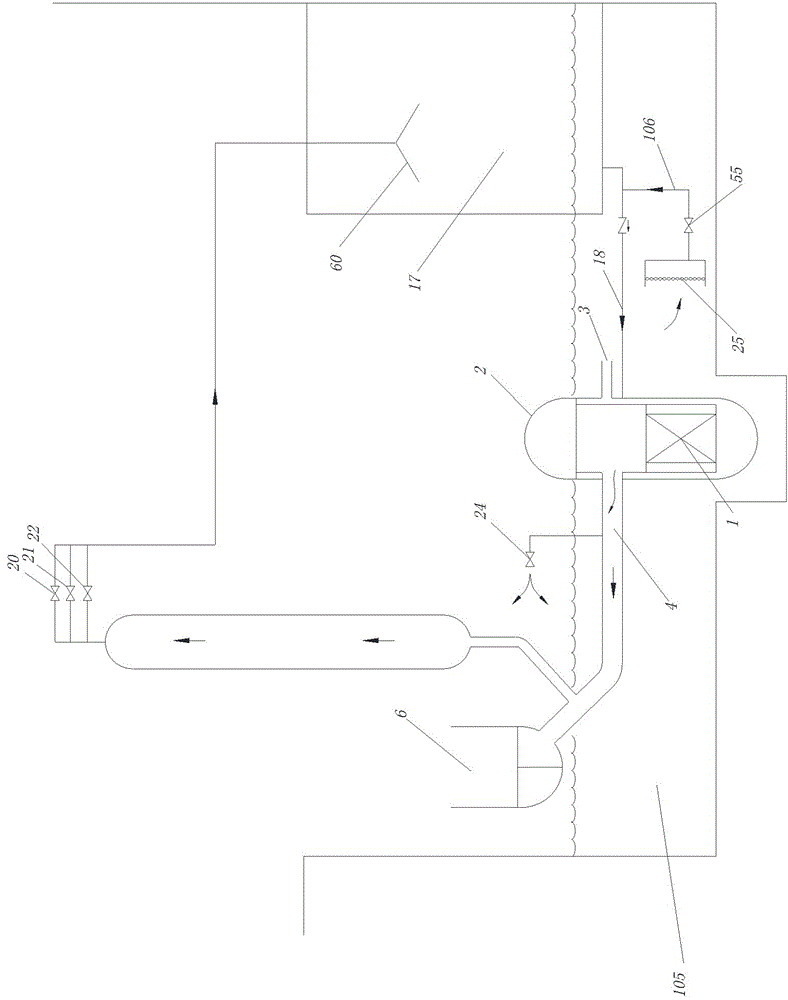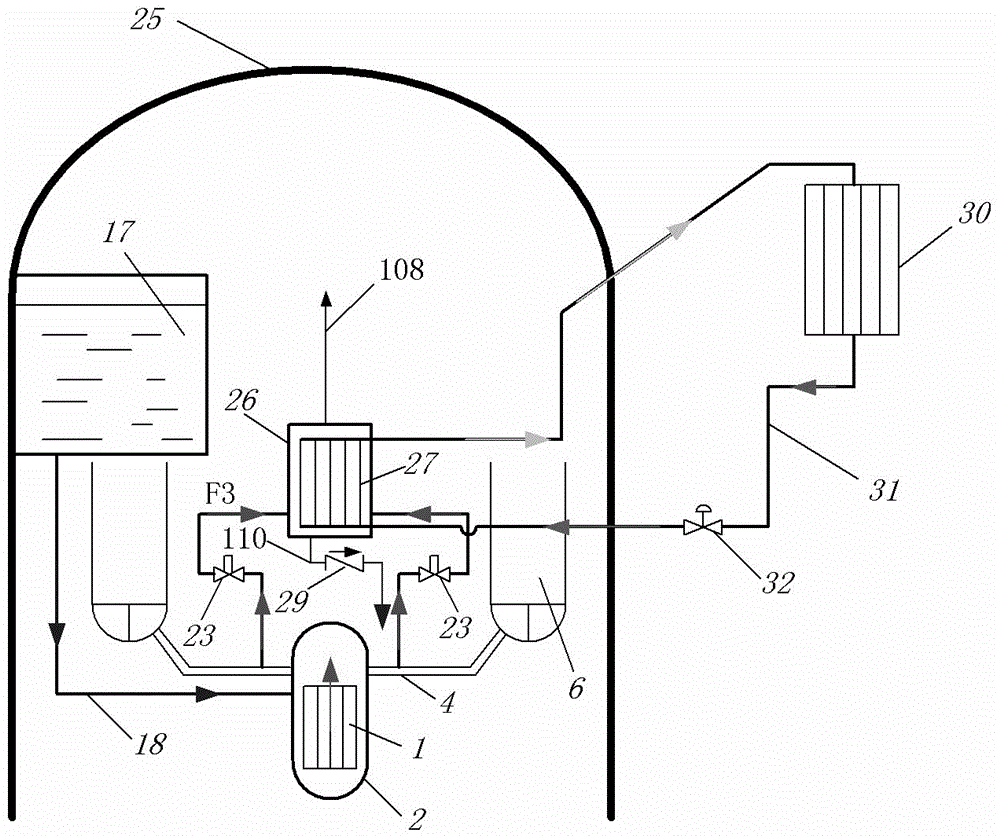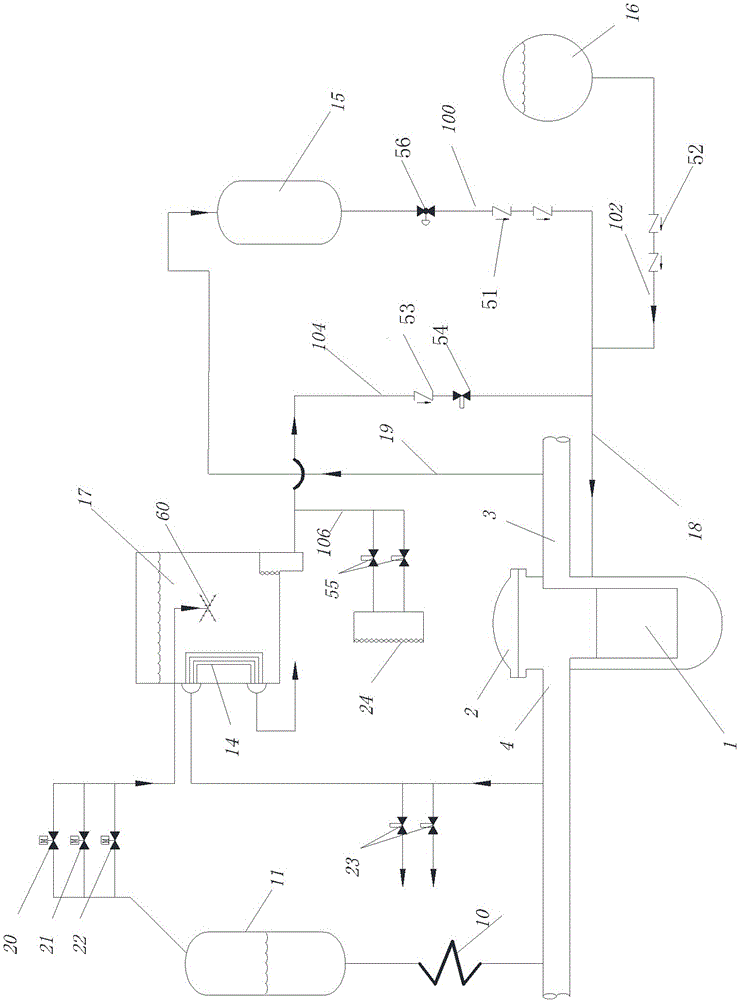Pressure release condensation heat transfer system for passive nuclear power station
A condensing heat transfer, passive technology, applied in nuclear power generation, nuclear engineering, cooling devices, etc., can solve the problems of reducing the natural circulation cooling flow of the reactor core, increasing the pressure of the containment, and reducing the liquid level in the pit, etc. Risk of radioactive leakage, effect of reducing back pressure and reducing load
- Summary
- Abstract
- Description
- Claims
- Application Information
AI Technical Summary
Problems solved by technology
Method used
Image
Examples
Embodiment Construction
[0022] Figure 1-Figure 5 and the following description describe alternative embodiments of the invention to teach those of ordinary skill in the art how to make and reproduce the invention. In order to teach the technical solutions of the present invention, some conventional aspects have been simplified or omitted. Those skilled in the art should understand that modifications or substitutions from these embodiments will fall within the protection scope of the present invention. Those of ordinary skill in the art will appreciate that the features described below can be combined in various ways to form multiple variations of the invention. As such, the invention is not limited to the alternative embodiments described below, but only by the claims and their equivalents.
[0023] The coolant in this context can be, for example, cooling water. Other coolants suitable for use in nuclear power plant systems that can perform cooling functions are also within the scope of the prese...
PUM
 Login to View More
Login to View More Abstract
Description
Claims
Application Information
 Login to View More
Login to View More - R&D
- Intellectual Property
- Life Sciences
- Materials
- Tech Scout
- Unparalleled Data Quality
- Higher Quality Content
- 60% Fewer Hallucinations
Browse by: Latest US Patents, China's latest patents, Technical Efficacy Thesaurus, Application Domain, Technology Topic, Popular Technical Reports.
© 2025 PatSnap. All rights reserved.Legal|Privacy policy|Modern Slavery Act Transparency Statement|Sitemap|About US| Contact US: help@patsnap.com



